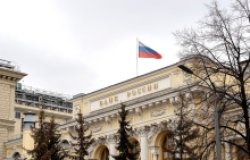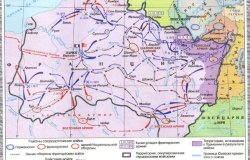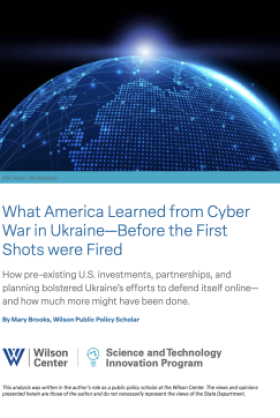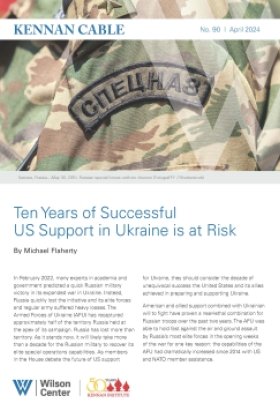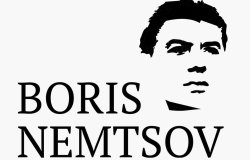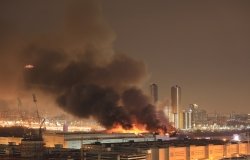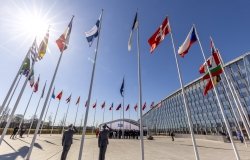Orange Revolution: Ukraine Votes for Change
When an election scandal rocked Ukraine, thousands of Ukrainians took to the streets of Kyiv in peaceful protest, in what became known as The Orange Revolution. After an election rerun in December, opposition candidate Viktor Yushchenko was inaugurated the new president in January, and the country now looks ahead with hope.
Since achieving independence in August 1991, Ukraine's leaders have advocated building a democratic, free-market society with strong relations with its Russian neighbor and deeper relations with Europe. The first two post-independence presidents, Leonid Kravchuk and Leonid Kuchma, each campaigned as reform candidates but ultimately Kuchma became more associated with corruption. Determined to hold onto power, he grew more conservative and backpedaled on reform, responding to dissension by cracking down on media freedom. In November 2001, Kuchma dismissed reform-minded Prime Minister Viktor Yushchenko and replaced him with Viktor Yanukovich. Ultimately, these two men would battle it out for president in November 2004. The story that unfolded is nothing short of remarkable.
Elections and Runoffs
The first round of Ukraine's presidential election was held on October 31, 2004 with more than 25 candidates on the ballot. Yanukovich and Yushchenko each received about 39 percent of the vote, much more than any other candidates but short of the 50 percent needed for victory, which necessitated a runoff election. That election, held on November 21, declared Yanukovich the victor. But thousands of accusations of fraud immediately poured in from independent election observers.
Yushchenko's troubles began long before the election. During two years of campaigning, the ruling party harassed his supporters, used state-sponsored media to portray Yushchenko as weak, and disrupted his funding. Yushchenko also survived several assassination attempts, including a near-fatal dioxin poisoning last year. Yet efforts to quash Yushchenko only increased his popularity, forcing the government to resort to electoral fraud to insure its desired outcome.
At a Kennan Institute event three days after the November runoff, Anders Aslund of the Carnegie Endowment for International Peace, cited evidence of ballot stuffing in the pro-Yanukovich regions of Eastern Ukraine. Furthermore, election results came in that were mathematically impossible. For example, several districts reported voter turnout greater than 100 percent. Ukraine scholar Taras Kuzio reiterated the severity of the fraud, contending that government falsification caused faulty poll numbers when, in fact, less than 30 percent of the entire population supported Yanukovich.
Meanwhile, a growing yet peaceful civil protest was taking shape in Kyiv's Nezhdelezhny Square, also known as the Maydan. As word spread of extensive election fraud, thousands of Yushchenko supporters gathered on the Maydan in peaceful protest. Within a few days, that number burgeoned to more than a million people.
Bolstered by the unyielding allegiance of the Maydan protesters and armed with hundreds of documented allegations of election fraud, Yushchenko appealed to Ukraine's Supreme Court, which subsequently nullified the election and ordered a new one. In that December 26 runoff, Yushchenko triumphed. He was inaugurated in January.
The People's Choice
Article 5 of Ukraine's Constitution states: "The people are the bearers of the sovereignty and the only source of power in Ukraine." This tenet proved true on the Maydan as thousands rallied against corruption and in support of democracy and rule of law.
Former U.S. Ambassador to Ukraine and Wilson Center Senior Policy Scholar William Green Miller spent six weeks in Ukraine during the crisis and witnessed the spectacle firsthand. "The Orange Revolution was a brilliant, largely spontaneous, and certainly colorful expression of popular will," he said.
Orange, never before used as a color in Ukrainian politics, suddenly appeared everywhere, Miller recounted. There were orange banners, ribbons, scarves, ties, hats, coats, dresses, and even orange kazoos that the protestors sounded in three-part toots to accompany cries of "Yu-shchen-ko!" Miller observed, "It was urban, mass political action of a peaceful, effective kind never seen before in Ukraine or anywhere else. It was democracy in the most direct form."
The mood had been changing steadily, however, long before the Orange Revolution took shape. Public opinion data over the past decade revealed a large and steady dissatisfaction with the Kuchma administration coupled with growing support for genuine democracy, according to data collected by Wilson Center Fellow Christian Haerpfer, reader in Politics in the Department of Politics and International Relations at the University of Aberdeen (UK). He discussed this survey data at a Kennan Institute seminar shortly before the December runoff. Haerpfer said the public's dissatisfaction with the government since 1996 had consistently remained above 80 percent.
Western and Central Ukraine, which have a larger ethnic Ukrainian majority, was even more dissatisfied with the Kuchma administration and more inclined to support Yushchenko in the election, compared with the larger Russian minority found in the Southern and Eastern regions. Also, according to Haerpfer's data, while the pro-democratic outlook among respondents rose significantly in both regions from 1996 - 2000, it declined across the board in 2002, though still remained above 50 percent. Haerpfer attributed the drop to the public's frustration with the Kuchma government.
That frustration came to a head in December on the Maydan when Ukrainians rallied for change and endorsed Yushchenko. "The great victory," said Miller, "was the result of the will of the majority of the Ukrainian people, who knew they had to fight for their constitutional rights by protest and direct action if they were to elect the man they believed best reflected their view of what a decent, honest leader should be."
What's Next?
With the electoral crisis over and as the Maydan once again teems with pedestrians rather than protesters, the new government is busy deliberating over policy. Expectations are high and challenges abound for Yushchenko's administration.
One of the most serious problems confronting Yushchenko is a divided society, stated Volodymyr Dubovyk, director of the Center for International Studies at Odesa State University, at a Kennan Institute lecture in February. Dubovyk, also a former Kennan regional exchange scholar and self-proclaimed Yushchenko supporter, said a significant minority of Ukrainians strongly opposes Yushchenko, viewing him as nationalist and anti-Russian. He added that divisions within Yuschchenko's broad-based group of supporters could impede efforts to push through reform.
Winning parliament's support and maintaining a strong coalition can help Yushchenko enact his reform agenda, said former U.S. Ambassador to Ukraine Steven Pifer at a February 10 Kennan Institute seminar. Noting that Yushchenko is advocating more than 100 domestic reforms from banking to trade, Pifer said the government must establish priorities and move to implement them.
"One of the things important politically within Ukraine but also important to sustaining Western interest in Ukraine is if the Yushchenko government can show early, concrete, practical results on his reform agenda," said Pifer. "We [The United States] should be looking at our assistance programs and recalibrate them so that we're devoting the maximum amount of assistance to those areas that the government is focused on now."
The United States plans to increase Freedom Support Act assistance to Ukraine, said John Tefft, U.S. deputy assistant secretary of state for European and East Eurasian Affairs, as well as help Ukraine further demilitarization efforts through the NATO Partnership for Peace program. Ukraine aspires to embark on a dual-track foreign policy by working to meet conditions necessary to join European and global institutions while building upon its relations with Russia. But, as Pifer pointed out, it will be a major challenge for Ukraine to move toward Europe without antagonizing Russia, especially concerning NATO membership.
"The United States wants to see Ukraine develop as a secure, independent, democratic, and economically prosperous country that respects human rights, has good relations with its neighbors, and increasingly draws closer to Europe and Euro-Atlantic institutions," Tefft said. However, Tefft added, the United States did not openly support any one candidate. "At no time did any American official in a responsible position either in Washington or out in Kyiv ever offer support to a particular candidate," he said. "Our support really was for a process." To that end, the United States contributed $18 million in election assistance, which helped fund local civic groups, train election officials and observers, conduct voter education, and provide nonpartisan training to political parties.
Tefft said, "History will judge these events by how successful Yushchenko and Ukraine's friends are going to be in the next few months in transforming that society and realizing the promise of the Orange Revolution."
Related Program

Kennan Institute
The Kennan Institute is the premier US center for advanced research on Russia and Eurasia and the oldest and largest regional program at the Woodrow Wilson International Center for Scholars. The Kennan Institute is committed to improving American understanding of Russia, Ukraine, Central Asia, the Caucasus, and the surrounding region though research and exchange. Read more

